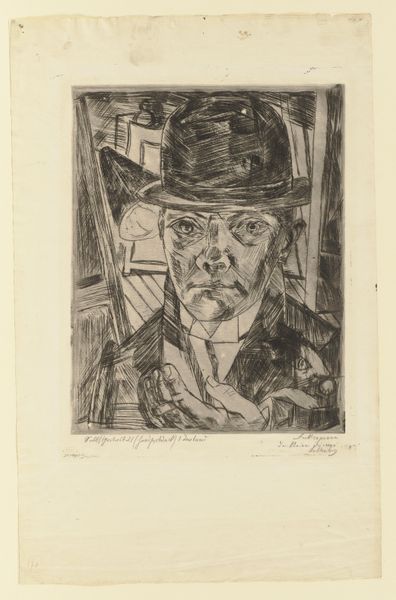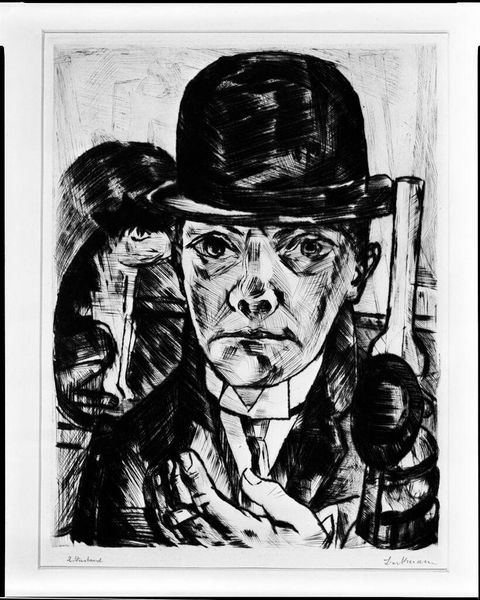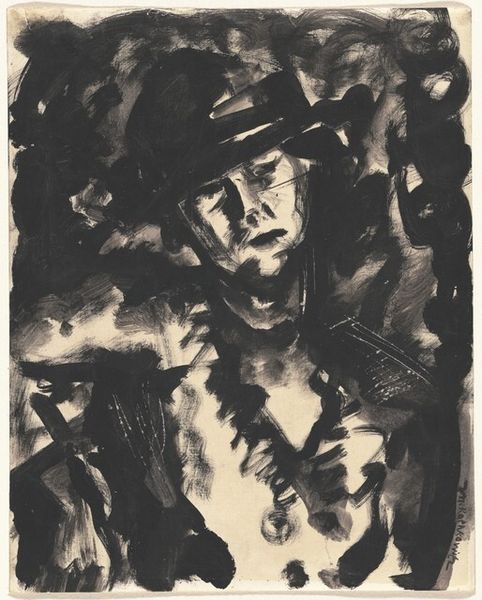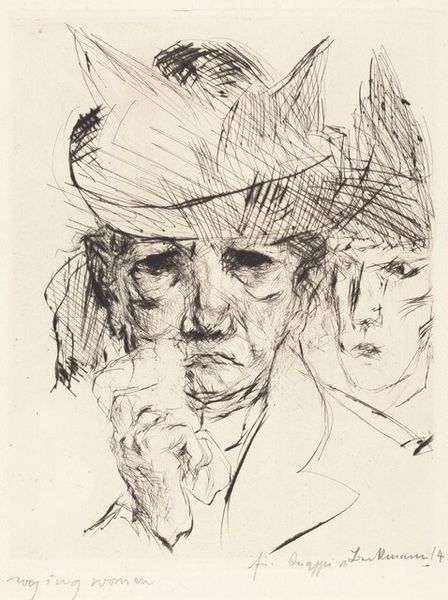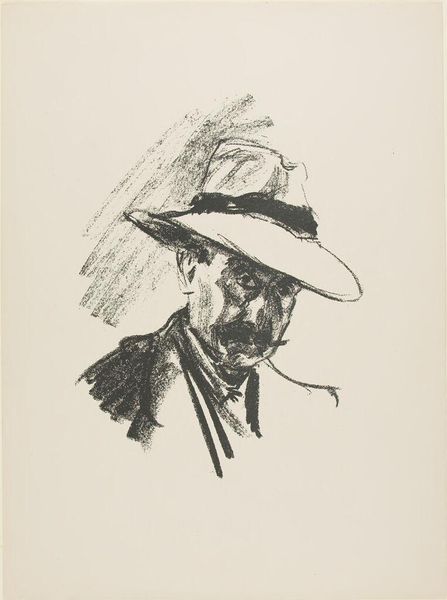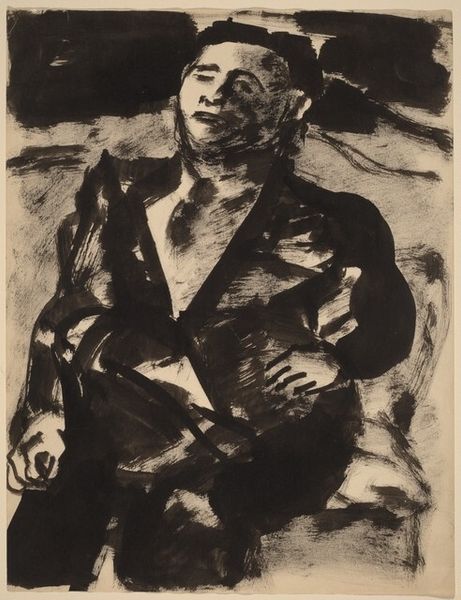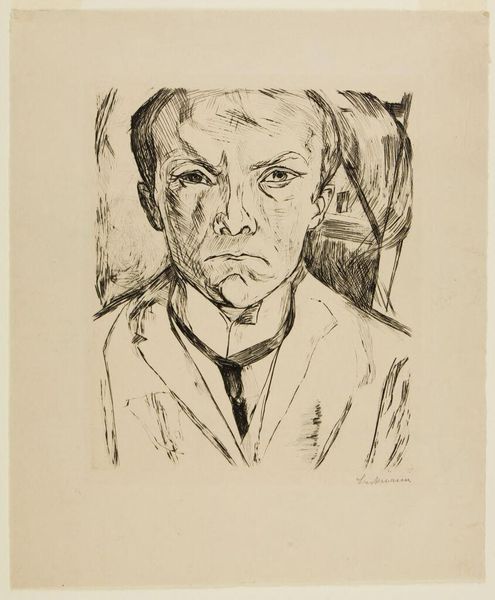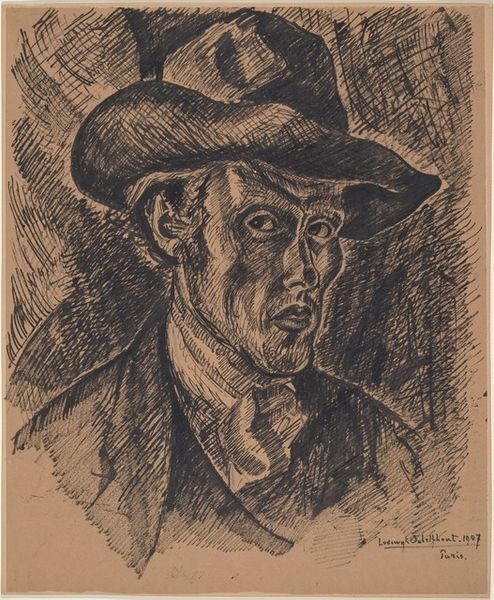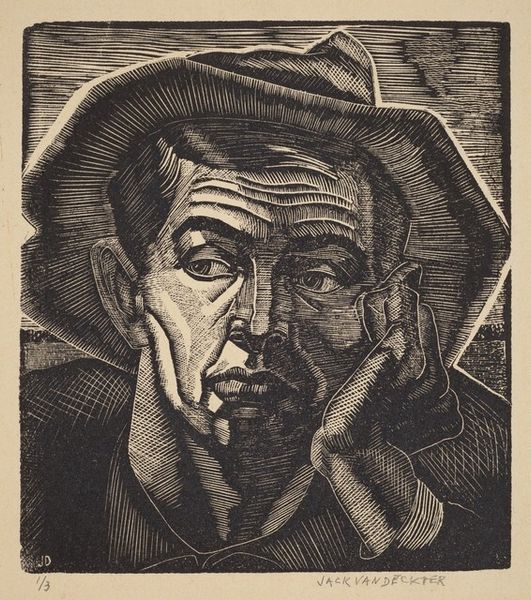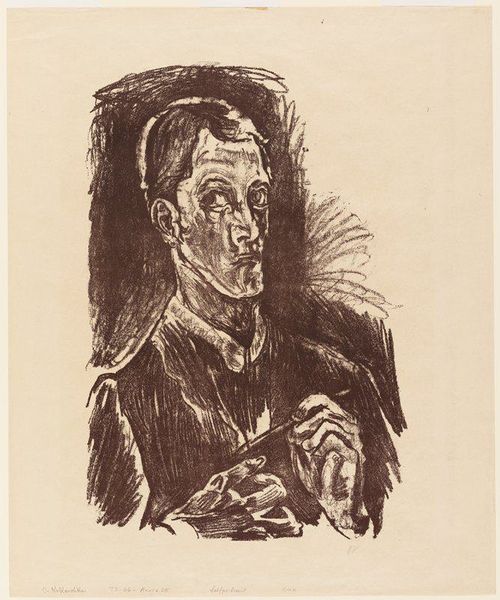
Selbstbildnis mit steifem Hut (Self-Portrait in Bowler Hat) 1921
0:00
0:00
print, drypoint
#
portrait
#
self-portrait
# print
#
german-expressionism
#
figuration
#
expressionism
#
line
#
drypoint
Dimensions: 12 9/16 x 9 9/16 in. (31.91 x 24.29 cm) (plate)17 1/4 × 12 3/8 in. (43.82 × 31.43 cm) (sheet)
Copyright: No Copyright - United States
This is Max Beckmann’s self-portrait, etched in monochrome sometime in the first half of the 20th century. Look at that sharp, wiry energy! You can really see Beckmann thinking through the process. What I love about this print is its brutal honesty, emphasized by the stark contrast between light and dark. The etched lines are raw, exposed. The whole surface is a network of marks, cross-hatching building up tone. Notice the density of lines around his eyes, which create a real sense of depth, and the more sparse lines defining the hand that sits in the foreground. That hand feels so open, so present. It’s a formal device to pull us into the picture plane. Beckmann’s stark self-portraits remind me of other German artists like Otto Dix and Kathe Kollwitz, who embraced printmaking as a medium for direct and unflinching social commentary. It’s that idea that art doesn’t have to be ‘beautiful’ to be powerful. That it can be a space for working through really difficult emotions.
Comments
minneapolisinstituteofart almost 2 years ago
⋮
In this 1921 self-portrait Beckmann depicts himself as a dandy with a bowler hat, stiff collar, and cigarette. The profile of a cat sitting on a table behind him to the left and an ashtray and kerosene lamp to his right fill out the tight composition. Beckmann created about eighty self-portraits over a career that spanned virtually half a century. He used his own image and persona to delve into the complexities of the human soul, showing the variety of selves that make up an individual. In Self-Portrait in Bowler Hat, Beckmann shows that he is every bit the modern man, confident in his powers of observation and cool, critical detachment.
Join the conversation
Join millions of artists and users on Artera today and experience the ultimate creative platform.
